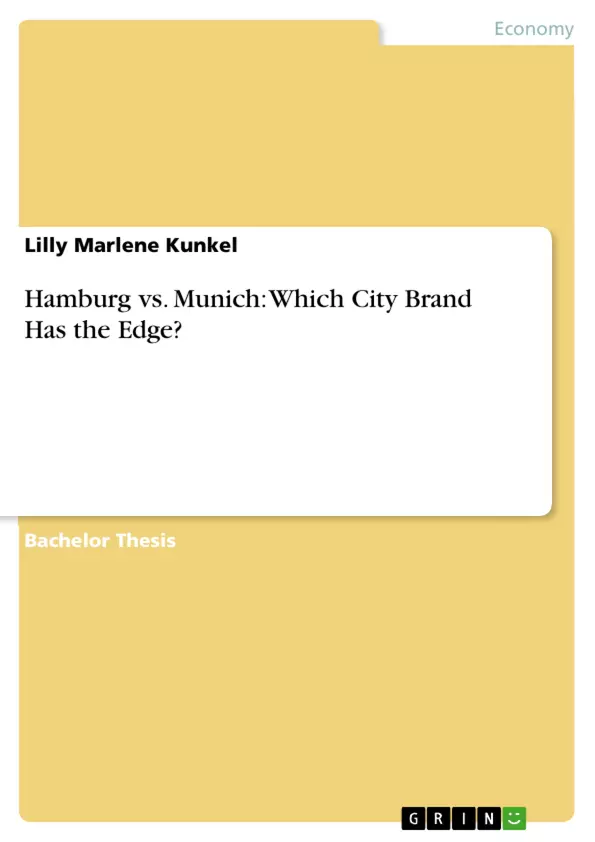The aim of this dissertation was to examine the development of Hamburg and Munich’s destination branding strategies and whether German consumers can tell the difference between the two. The findings indicated that the overall recognition of Munich among the participants of this study was better than that of Hamburg. But it was also found that the recognition of Hamburg is based on more distinct recognition features than that of Munich, and therefore, it was concluded that it is more sustainable. Regarding the branding of Hamburg and Munich it was found that the Hamburg brand is built on the city’s core values and already positive organic image, whereas the Munich brand was built mainly on artificial emotional values that contradict its rather negative organic image. In the direct comparison of the participants’ images of the two cities, Hamburg’s image was found to be far better. Together with the finding that the brand communication for Hamburg was more authentic and addressed its target groups more precisely than the brand communication for Munich, the above mentioned findings led to the conclusion that the overall branding strategy for Hamburg is more successful than that for Munich.
Inhaltsverzeichnis (Table of Contents)
- Introduction
- Aim and Objectives
- Summary of Methodology
- Summary of Contents
- Literature Review
- Definition of Destination Image and Branding
- The Importance of a Distinct Destination Image and Brand
- Destination Image Formation, Branding and Brand Positioning
- Methodology
- Justification for Research
- Research Theory
- Research Methods
- Secondary Data
- Primary Data
- Data Quality Issues and Bias
- Findings and Analysis
- The Importance of Destination Image and Branding and the Destination Brand Building in the Cases Hamburg and Munich
- Customer Recognition of the Destination Brands Hamburg and Munich Based on Imagery
- Customer Perception and Image of Hamburg and Munich
- Conclusions
Zielsetzung und Themenschwerpunkte (Objectives and Key Themes)
This dissertation examines the development of destination branding strategies for Hamburg and Munich. The main objective is to determine whether German consumers can differentiate between the two cities' brands and assess the sustainability of their respective brand images. Key themes investigated in the dissertation include:- Destination image and branding
- Consumer recognition and perception of city brands
- Branding strategy effectiveness
- Authenticity in brand communication
- Sustainability of brand image
Zusammenfassung der Kapitel (Chapter Summaries)
The introduction outlines the dissertation's aim and objectives, provides a summary of the methodology employed, and presents an overview of the content. The literature review defines key concepts such as destination image and branding, exploring their importance in creating a distinct destination brand. It further examines the process of destination image formation, branding, and brand positioning. The methodology chapter justifies the research, outlines the theoretical framework, and details the research methods used. It provides a comprehensive overview of both secondary and primary data collection and analysis. The findings and analysis chapter examines the significance of destination image and branding in the case of Hamburg and Munich, analyzing customer recognition of the two cities based on imagery. The chapter also explores customer perception and image of the two cities.Schlüsselwörter (Keywords)
The primary keywords and focus topics of this dissertation include destination branding, city image, consumer perception, branding strategy effectiveness, authenticity, sustainability, Hamburg, Munich, and German consumers. The research investigates the development and effectiveness of destination branding strategies for Hamburg and Munich, analyzing consumer recognition and perception of the two cities' brands.- Arbeit zitieren
- Lilly Marlene Kunkel (Autor:in), 2008, Hamburg vs. Munich: Which City Brand Has the Edge?, München, GRIN Verlag, https://www.grin.com/document/140508



